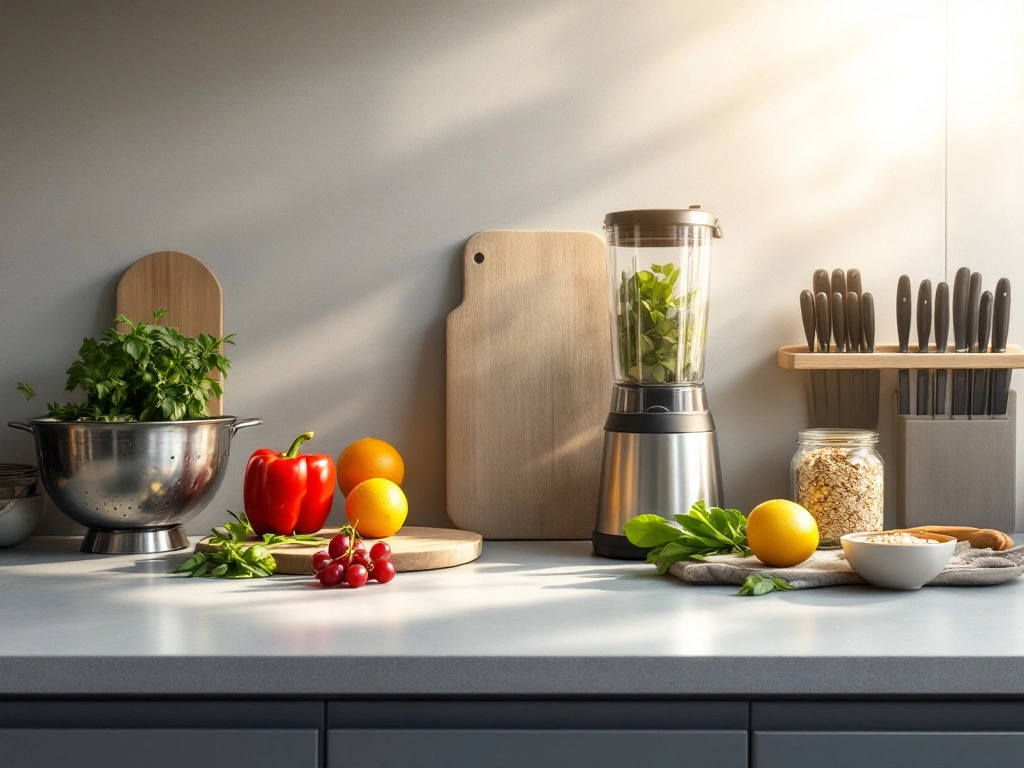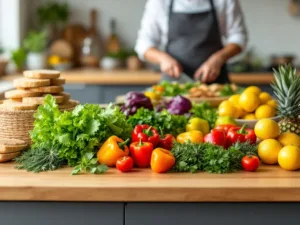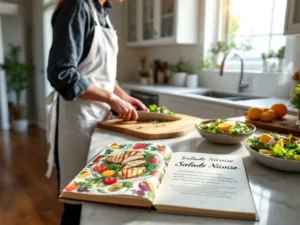How to Prepare Healthy Snacks for the Whole Day: A Comprehensive Guide to Nutritious and Delicious Eating
In today’s fast-paced world, maintaining a healthy diet can often feel like an uphill battle. Between work, family, and social commitments, finding time to prepare nutritious meals and snacks can be challenging. However, snacking doesn’t have to mean reaching for a bag of chips or a sugary treat. With a little planning and creativity, you can prepare healthy snacks that keep you energized, satisfied, and on track with your wellness goals throughout the day.
This article will provide you with a complete guide to preparing healthy snacks for the whole day. From understanding the importance of smart snacking to practical tips and recipes, you’ll learn how to make snacking a beneficial part of your daily routine. Whether you’re a busy professional, a student, or a parent juggling multiple responsibilities, this guide will help you make healthier choices without sacrificing taste or convenience.
The Importance of Healthy Snacking
Why Snacking Matters
Snacking often gets a bad reputation, but when done right, it can be a powerful tool for maintaining energy levels, stabilizing blood sugar, and preventing overeating during main meals. Healthy snacks can provide essential nutrients, curb cravings, and keep your metabolism active.
The Risks of Poor Snacking Choices
On the flip side, unhealthy snacking—such as consuming processed foods high in sugar, salt, and unhealthy fats—can lead to weight gain, energy crashes, and long-term health issues like diabetes and heart disease. The key is to choose snacks that are nutrient-dense and balanced.
Benefits of Preparing Your Own Snacks
Preparing your own snacks allows you to control the ingredients, portion sizes, and nutritional content. It also saves money and reduces reliance on packaged foods, which often contain additives and preservatives.
Planning Your Snacks: A Step-by-Step Approach
Assess Your Daily Nutritional Needs
Before diving into snack preparation, it’s important to understand your nutritional requirements. Factors like age, gender, activity level, and health goals will influence the types and quantities of snacks you need. For example, an athlete may require more protein-rich snacks, while someone with a sedentary lifestyle might focus on low-calorie, high-fiber options.
Create a Snacking Schedule
To avoid mindless eating, plan your snacks around your daily routine. Aim for two to three snacks per day, spaced between meals. For instance:
- Morning snack: Between breakfast and lunch
- Afternoon snack: Between lunch and dinner
- Evening snack (if needed): After dinner
Stock Up on Healthy Ingredients
Keep your pantry, fridge, and freezer stocked with wholesome ingredients. Some staples to include are:
- Fresh fruits and vegetables
- Nuts and seeds
- Whole grains (e.g., oats, quinoa, whole-grain crackers)
- Lean proteins (e.g., Greek yogurt, cottage cheese, boiled eggs)
- Healthy fats (e.g., avocado, nut butter, olive oil)
Healthy Snack Ideas for the Whole Day
Morning Snacks: Fuel for a Productive Start
The morning snack should provide a balance of carbohydrates, protein, and healthy fats to keep you energized until lunch.
Examples:
- Apple Slices with Almond ButterSlice a medium apple and pair it with a tablespoon of almond butter for a satisfying crunch and a dose of healthy fats.
- Greek Yogurt with BerriesTop a cup of plain Greek yogurt with fresh berries and a sprinkle of chia seeds for added fiber and omega-3s.
- Hard-Boiled Eggs and Whole-Grain CrackersA protein-packed option that’s easy to prepare in advance.
Afternoon Snacks: Beat the Midday Slump
The afternoon is when energy levels often dip, making it crucial to choose snacks that provide sustained energy.
Examples:
- Hummus and Veggie SticksPair carrot sticks, cucumber slices, and bell pepper strips with a serving of hummus for a fiber-rich snack.
- Trail MixCreate your own mix with unsalted nuts, dried fruit, and a handful of dark chocolate chips for a sweet treat.
- Whole-Grain Toast with AvocadoSpread mashed avocado on a slice of whole-grain toast and sprinkle with salt, pepper, and red pepper flakes.
Evening Snacks: Light and Satisfying
Evening snacks should be light yet satisfying to prevent overeating before bed.
Examples:
- Cottage Cheese with PineappleA low-calorie option that’s rich in protein and calcium.
- Air-Popped PopcornSeason with a dash of olive oil and nutritional yeast for a savory, guilt-free snack.
- Dark Chocolate and AlmondsA small piece of dark chocolate paired with a few almonds can satisfy sweet cravings without derailing your diet.
Tips for Preparing Healthy Snacks
Portion Control
Even healthy snacks can contribute to weight gain if consumed in large quantities. Use small containers or bags to pre-portion snacks and avoid overeating.
Meal Prep Like a Pro
Set aside time each week to prepare snacks in advance. Wash and chop vegetables, cook hard-boiled eggs, and portion out nuts and seeds into single servings.
Keep It Colorful
Incorporate a variety of colors into your snacks to ensure a wide range of nutrients. For example, pair red bell peppers with green cucumber slices and orange carrot sticks.
Stay Hydrated
Sometimes thirst is mistaken for hunger. Keep a water bottle handy and drink plenty of fluids throughout the day. Herbal teas and infused water can also add variety.
Overcoming Common Snacking Challenges
Snacking at Work
Keep a stash of healthy snacks at your desk, such as nuts, dried fruit, or whole-grain crackers. Avoid the vending machine by planning ahead.
Snacking on the Go
Pack portable snacks like granola bars, fruit, or single-serving nut butter packets in your bag for when you’re out and about.
Dealing with Cravings
If you’re craving something sweet, opt for naturally sweet options like fruit or a small piece of dark chocolate. For salty cravings, try roasted chickpeas or kale chips.
Final Thoughts: Making Healthy Snacking a Lifestyle
Preparing healthy snacks for the whole day doesn’t have to be complicated or time-consuming. With a little planning and creativity, you can enjoy delicious, nutrient-packed snacks that support your overall health and well-being. Remember, the key is to focus on whole, minimally processed foods and to listen to your body’s hunger cues.
By incorporating the tips and ideas outlined in this article, you’ll be well on your way to making healthy snacking a sustainable and enjoyable part of your daily routine. So, grab your reusable containers, stock up on fresh ingredients, and start snacking smarter today!
Final Advice: Start small by incorporating one or two healthy snacks into your day and gradually build from there. Over time, these small changes will add up to big results, helping you feel your best and achieve your health goals. Happy snacking!









Add comment